2 Work Package 2: Fishery-independent (scientific) surveys
2.1 Biotic Explorer
Mikko Vihtakari (IMR), Ibrahim Umar (IMR)
2019-07-08
A Shiny app for examination and manipulation of the Norwegian Maritime Data Center (NMD) standard Biotic xml files as well as the IMR’s Biotic database.
License: GPL3
URL (software): https://github.com/MikkoVihtakari/BioticExplorer
Keywords: biotic, NMD, IMR, filter, database, file, marine
Screenshots:
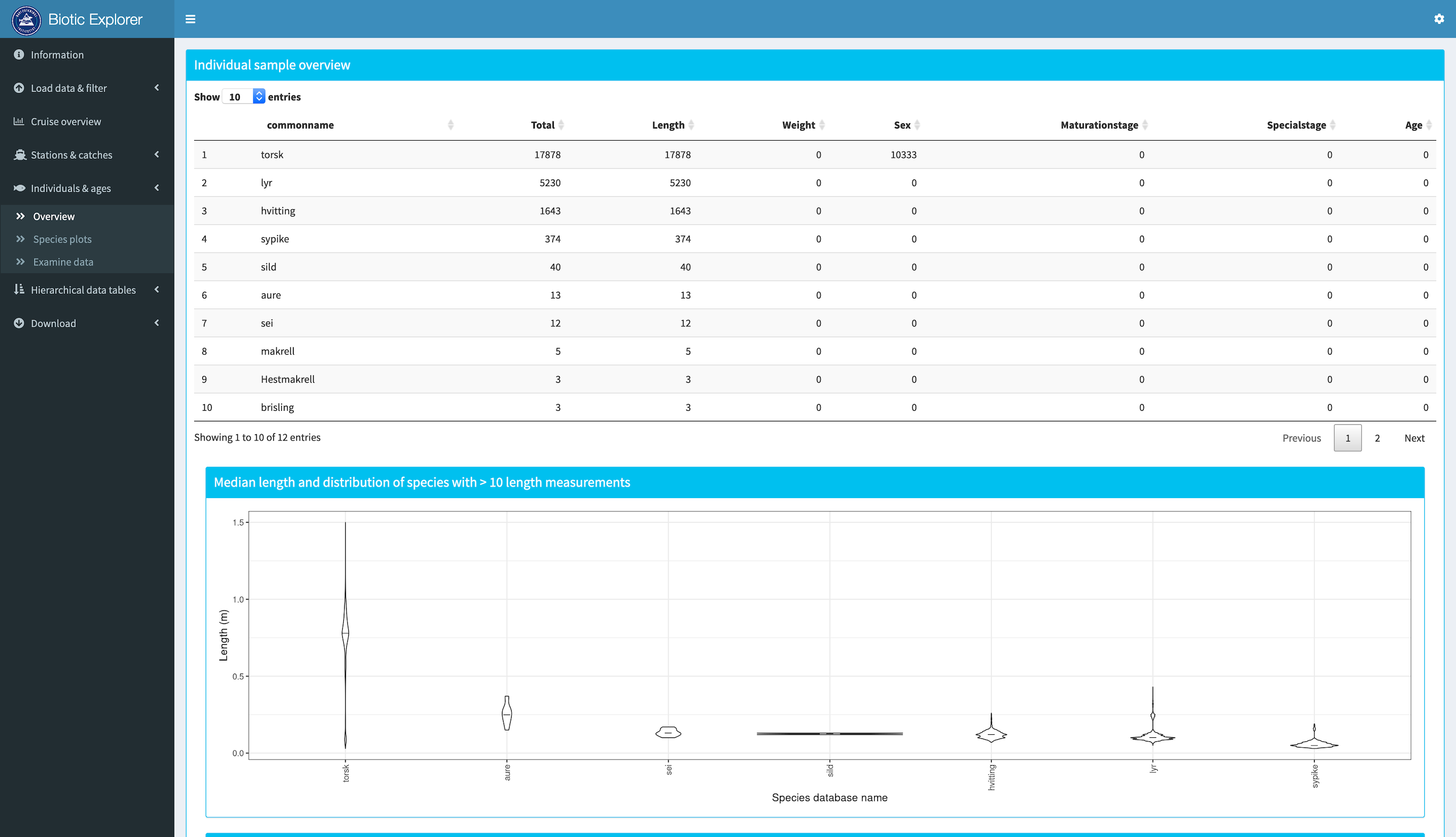
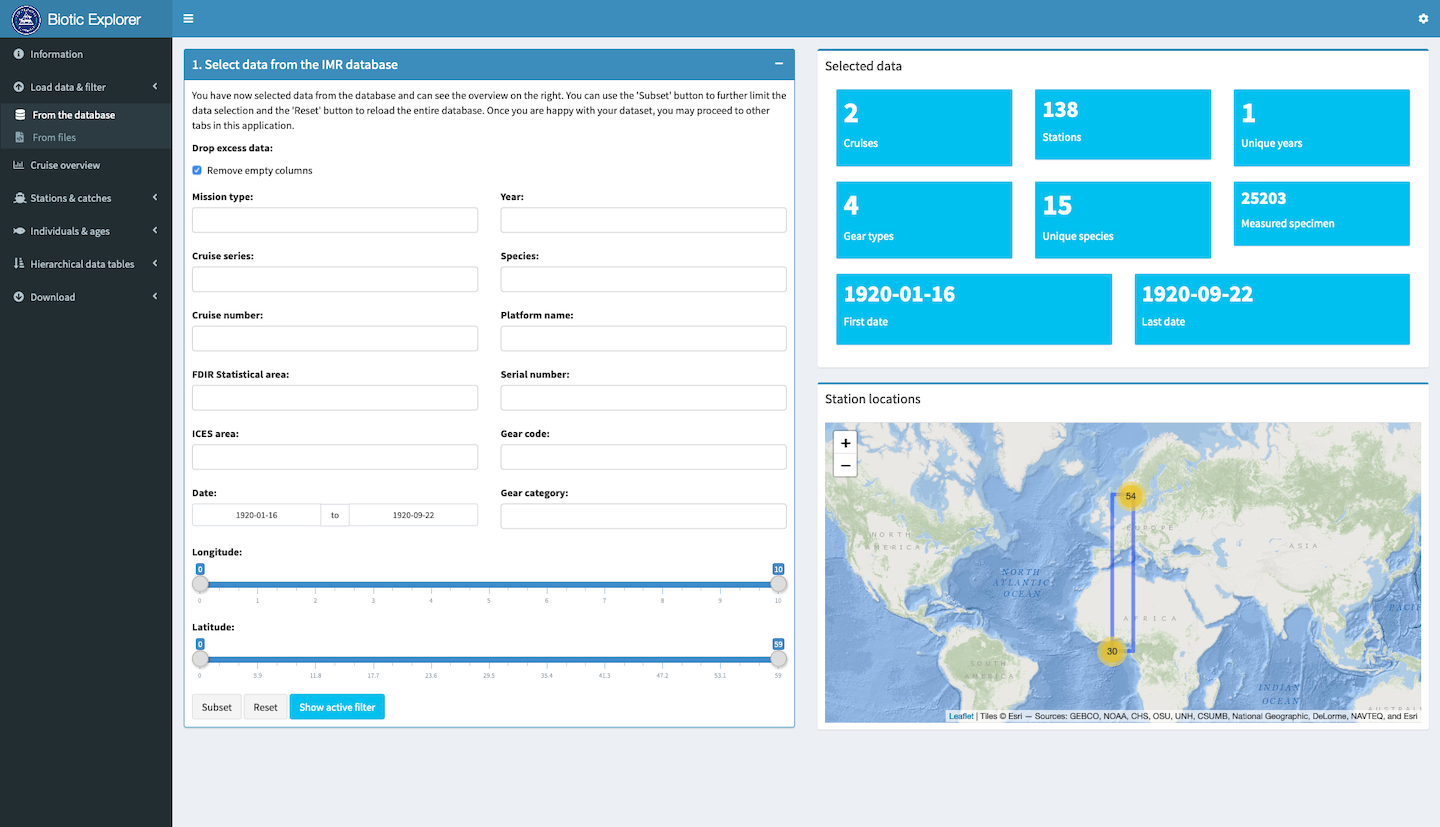
2.2 Echosounder comparison tool
Ibrahim Umar (IMR), Espen Johnsen (IMR)
2017-11-28
An R package to visually check and compare multiple echosounder data from different sources (NMD, CES, BEI, etc.) that are coming from the same cruise.
License: LGPL3
URL (software): https://github.com/REDUS-IMR/REDUSnmdqeval
Keywords: IMR, R, NMD, echosounder, acoustic, cruise, compare
Screenshots:
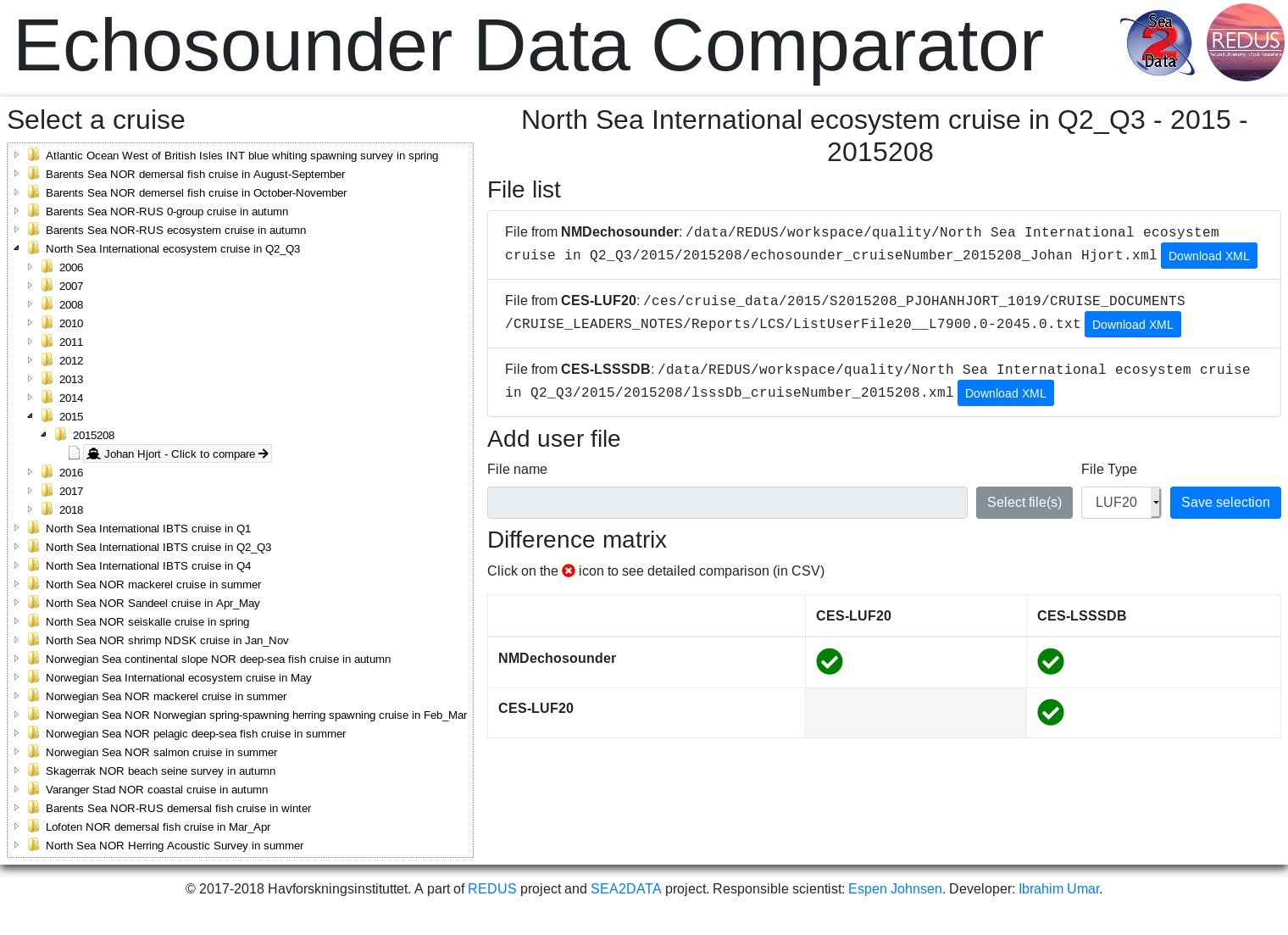
Screenshot1
2.3 Python EchoTools
Ibrahim Umar (IMR), Sindre Vatnehol (IMR), Nils Olav Handegard (IMR)
2018-10-24
A collection of Python scripts that can help in organizing all of the IMR’s acoustic raw data and LSSS databases. This tools also supports an automatic batch processing of the raw data to produce LUF20 reports by utilizing LSSS application.
License: LGPL3
URL (software): https://github.com/REDUS-IMR/EchoTools
Keywords: acoustic, echosounder, python, IMR, REDUS, convert, organize, LUF20, SIMRAD, LSSS
2.4 RstoxData
Ibrahim Umar (IMR), Arne Johannes Holmin (IMR), Edvin Fuglebakk (IMR), Sindre Vatnehol (IMR), Espen Johnsen (IMR)
2019-03-03
Set of tools to read and manipulate various data formats for fisheries. Mainly catered towards scientific trawl survey sampling (‘biotic’) data, acoustic trawl data, and commercial fishing catch (‘landings’) data. Among the supported data formats are the data products from the Norwegian Institute Marine Research (‘IMR’) and the International Council for the Exploration of the Sea (ICES).
License: LGPL3
Jupyter notebook: (show) (download)
URL (software): https://github.com/StoXProject/RstoxData
Keywords: data, fisheries, biotic, acoustic, landings, ICES, reader, XML, REDUS, IMR
2.5 Survey time series tools
Ibrahim Umar (IMR)
2019-11-22
An R package containing survey time series tools. One tool in the package enables users to download a complete StoX’s survey time series project (StoX project file + biotic data + acoustic data). A drop-in replacement of the deprecated NMD datasetexplorer’s ZIP download feature. Another tool enables users to check if their own survey time series’ StoX project XML file is correct (i.e., can be processed and produces official estimates) or not.
License: LGPL3
URL (software): https://github.com/REDUS-IMR/stsdownloader
Keywords: survey time series, IMR, REDUS, download, zip, check, estimates
Screenshots:
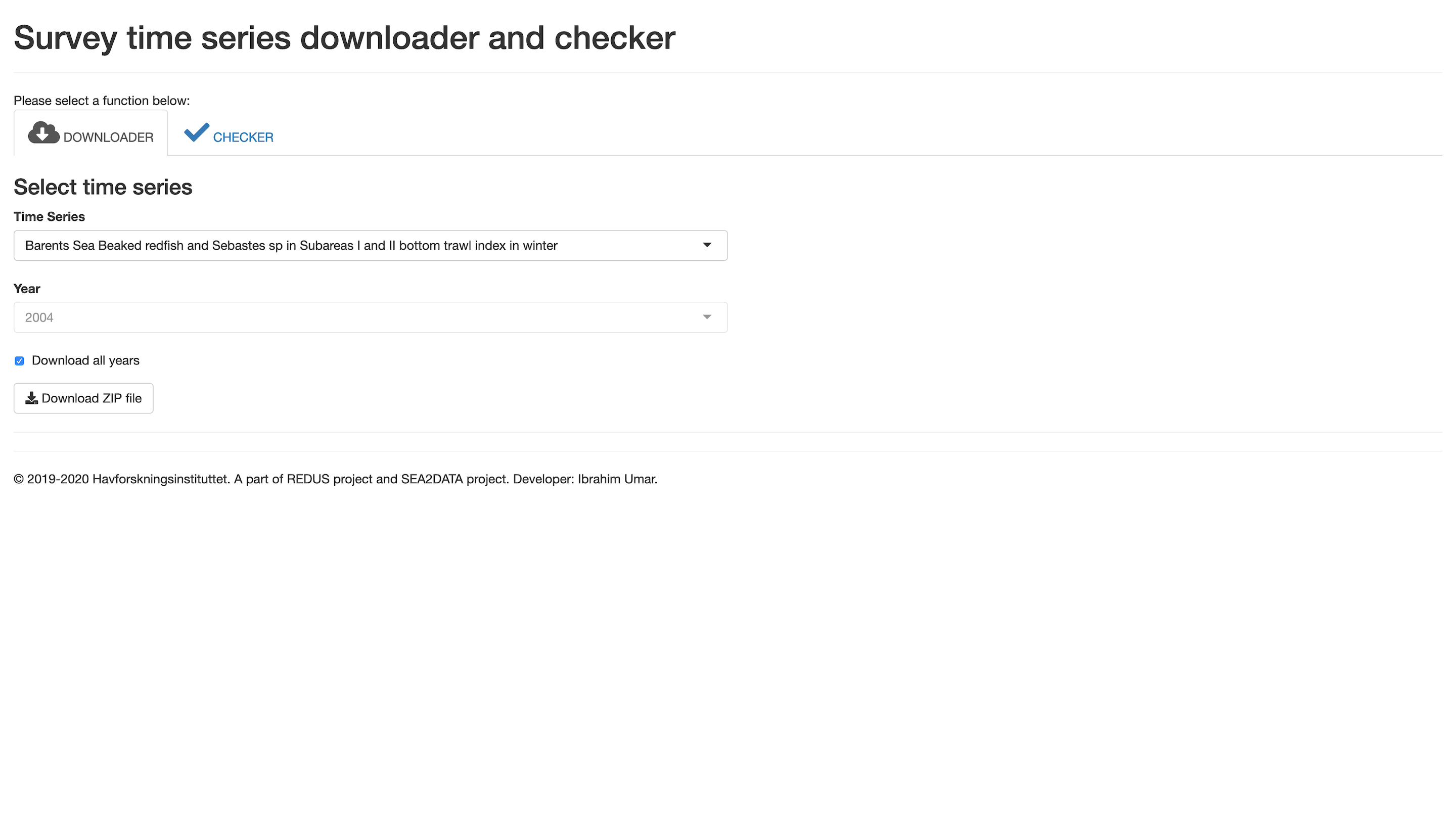
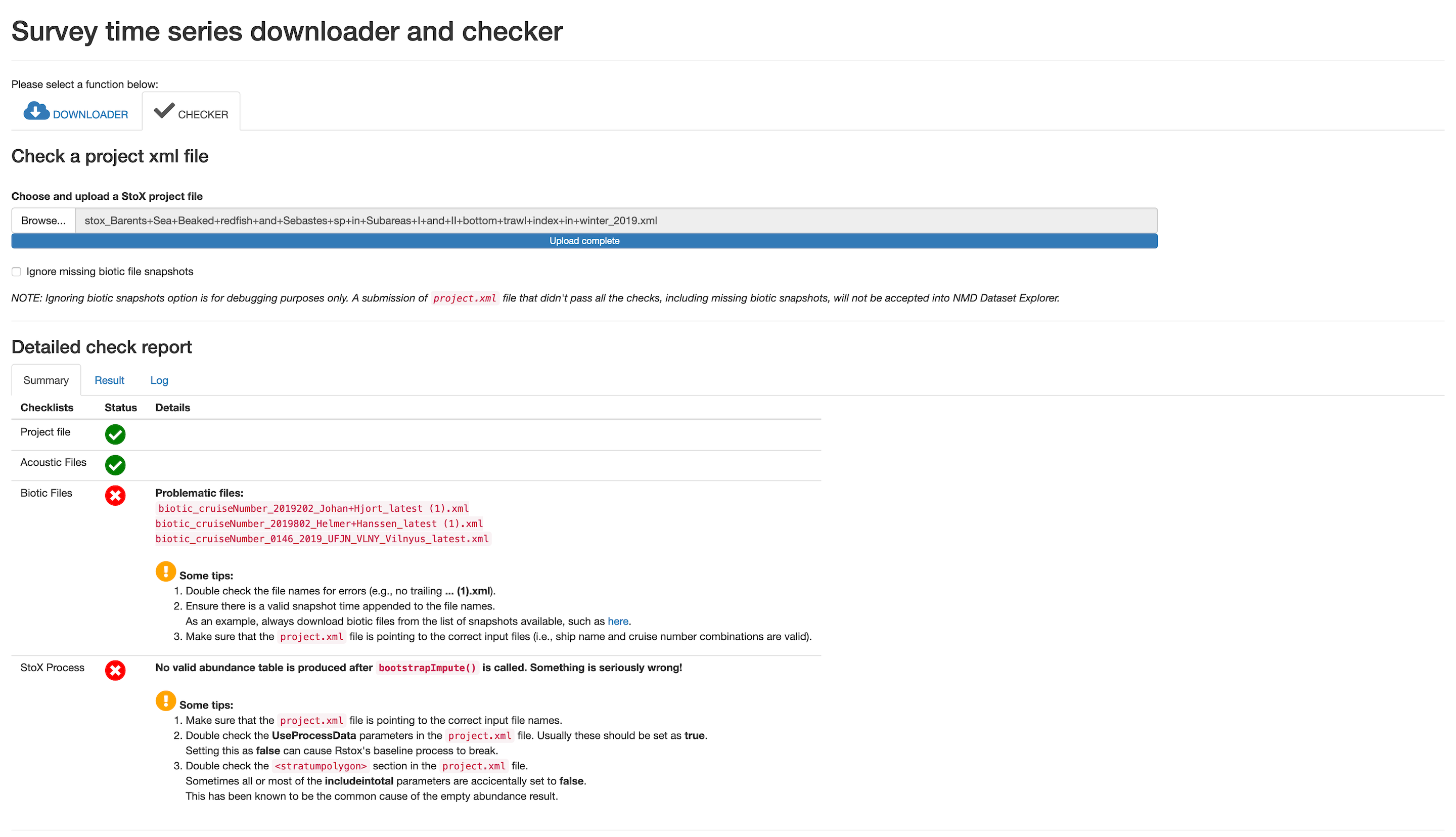
2.6 Various useful snippets
Ibrahim Umar (IMR)
2020-12-31
This is a collection of some scripts that can be useful for processing the IMR biotic data version 3 using R program. One script is for downloading a whole cruise and flattening the tables into one big table, while another one is for adding the missing scientific names for all the samples
Jupyter notebook: (show) (download)
Download (software): ibrahim-various_scripts.R
Keywords: scripts, biotic, REDUS, IMR
2.7 Trawl Performance Report
Melanie Underwood (IMR)
2020-12-05
Program that reads the trawl sensors data (Scanmar data and toktlogger REF files) to create a report. The report gives insights on when a trawl is performing correctly or when there is something that needs to be looked into further (i.e., opening height is too low/high or the trawl did not have good bottom contact, etc).
License: LGPL2
URL (software): https://github.com/Mel-Underwood/Trawl-Preformance-Report
Keywords: trawl, scanmar, toktlogger, sensors, report, performance, REDUS, IMR
Screenshots:
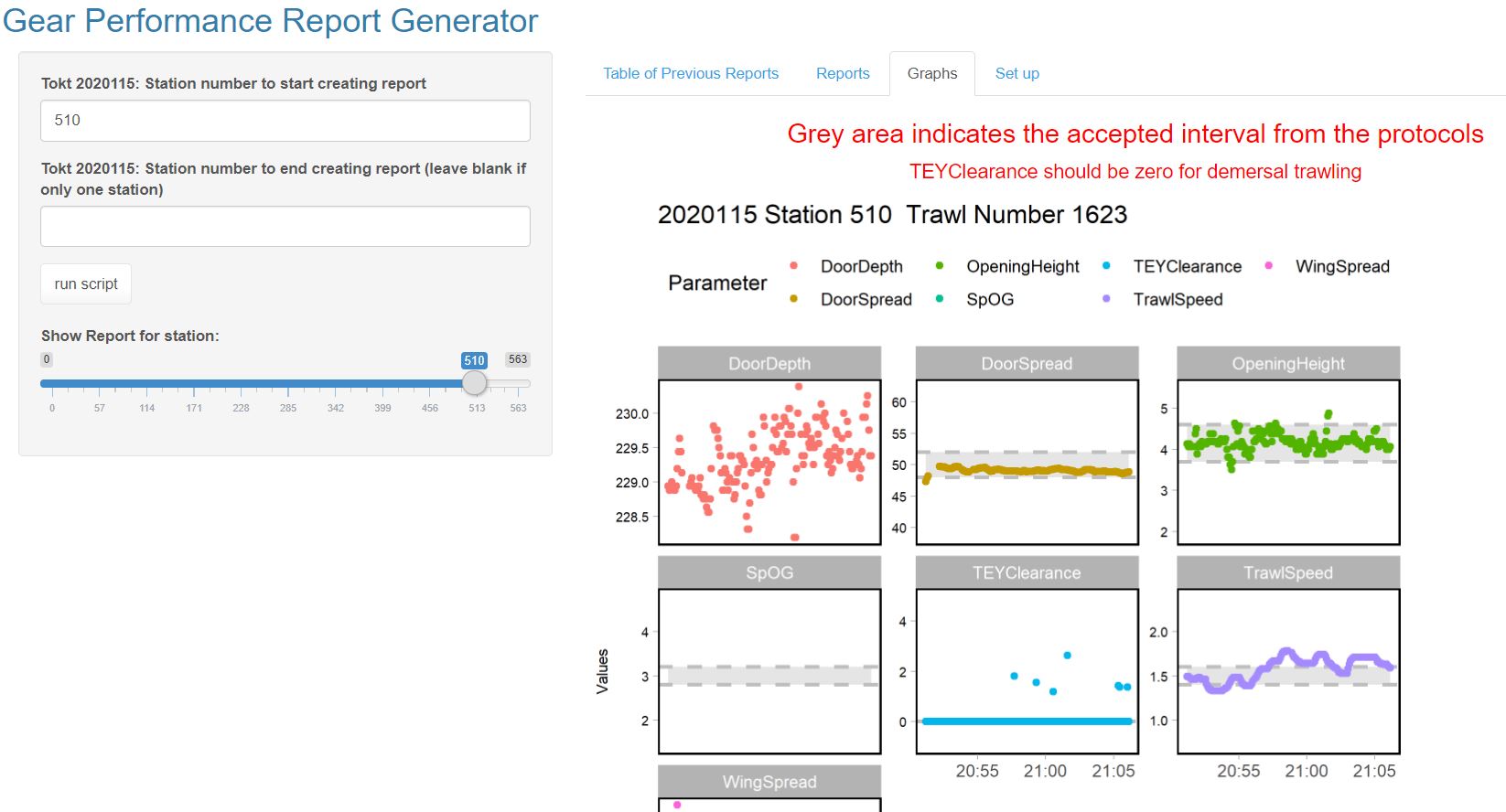
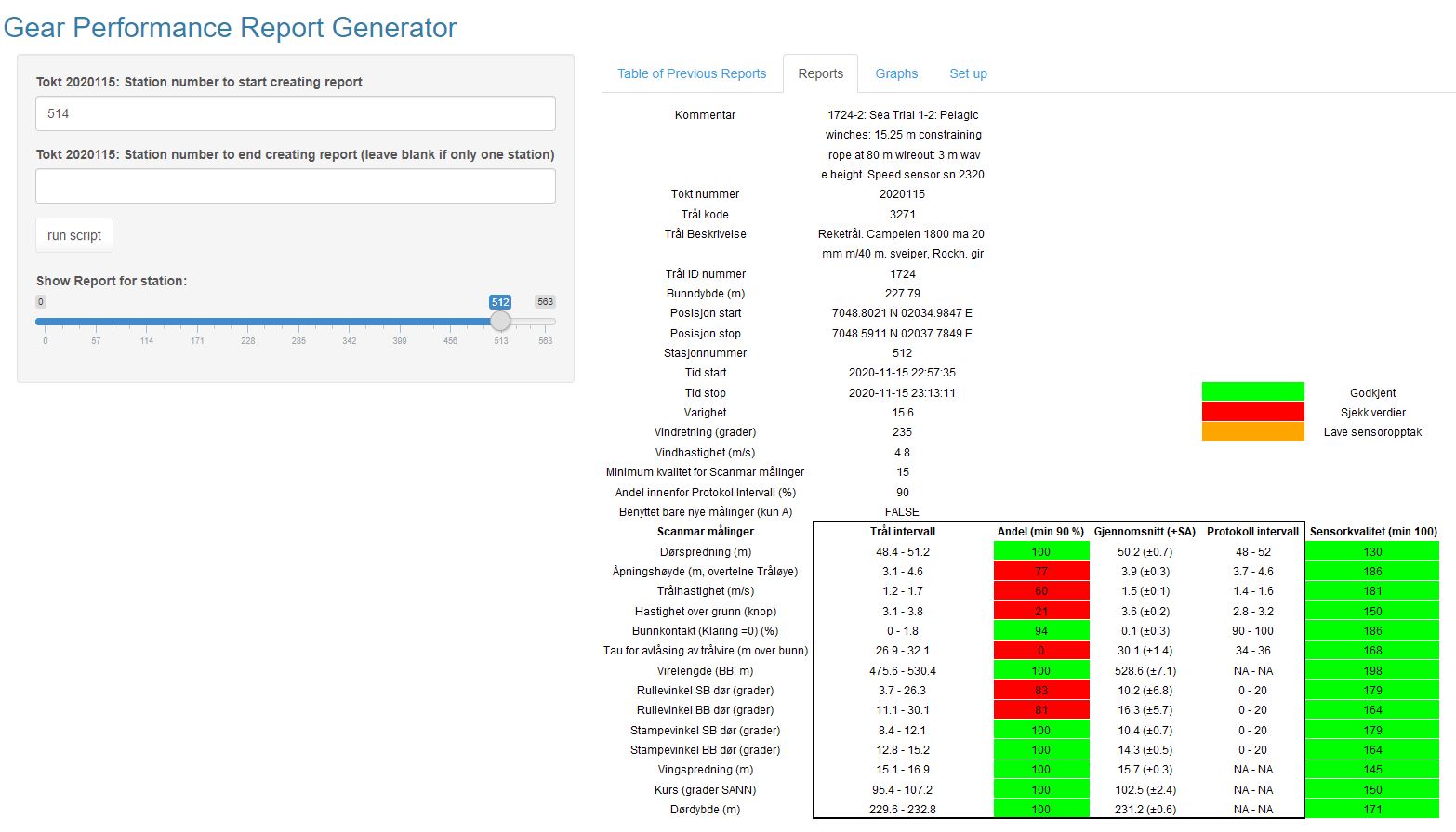
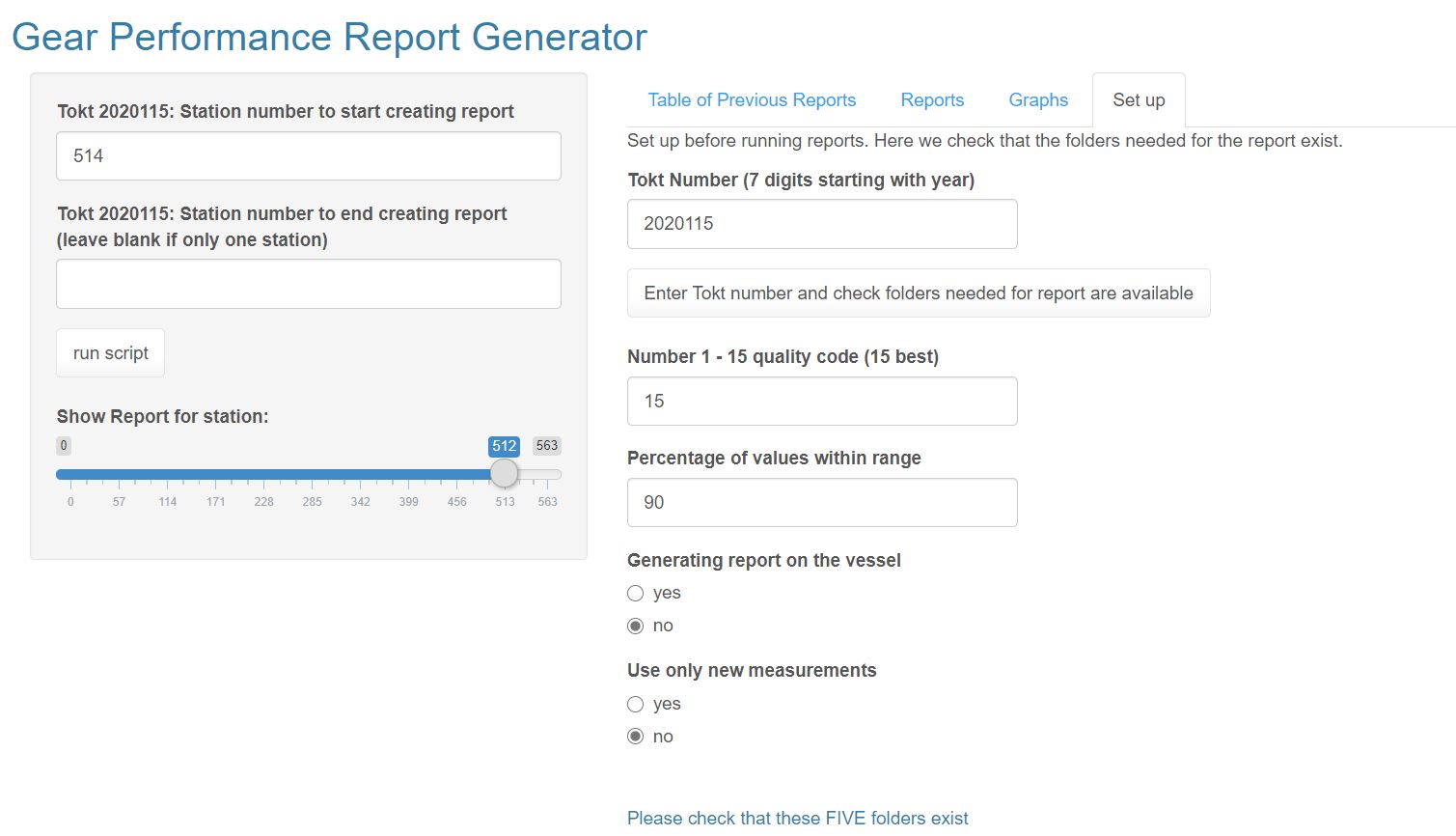
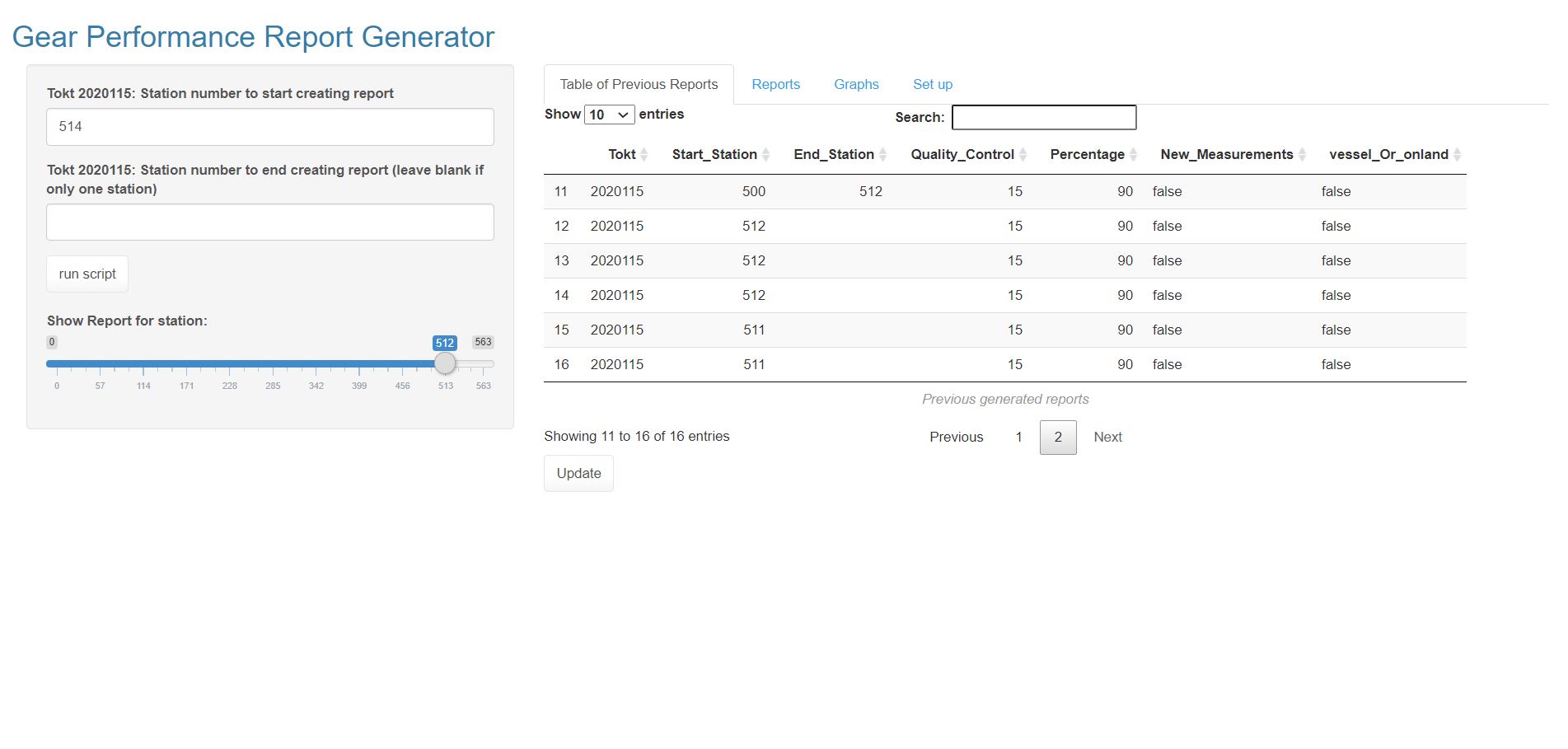

2.8 IBTSNorthSea: sampling strategies for age determination of cod (Gadhus morhua)
Natoya O.A.S. Jourdain (IMR), Olav N. Breivik (NR) and Edvin Fuglebakk (IMR)
2019-02-20
The North Sea cod stock assessment is based on indices of abundance-at-age from fishery-independent bottom trawl surveys. The age structure of the catch is estimated by sampling fish for otoliths collection in a length-stratified manner from trawl hauls. Since age determination of fish is costly and time consuming, only a fraction of fish is sampled for age from a larger sample of the length distribution and an age–length key (ALK) is then used to obtain the age distribution. In this study, we evaluate ALK estimators for calculating the indices of abundance-at-age, with and without the assumption of constant age–length structures over relatively large areas. We show that the ALK estimators give similar point estimates of abundance-at-age and yield similar performance with respect to precision. We also quantify the uncertainty of indices of abundance and examine the effect of reducing the number of fish sampled for age determination on precision. For various subsampling strategies of otoliths collection, we show that one fish per 5-cm-length group width per trawl haul is sufficient and the total number of fish subsampled for age from trawl surveys could be reduced by at least half (50%) without appreciable loss in precision.
Jupyter notebook: (show) (download)
URL (software): https://github.com/NatoyaJourdain/IBTSNorthSea
Related identifiers: https://doi.org/10.1093/icesjms/fsaa013